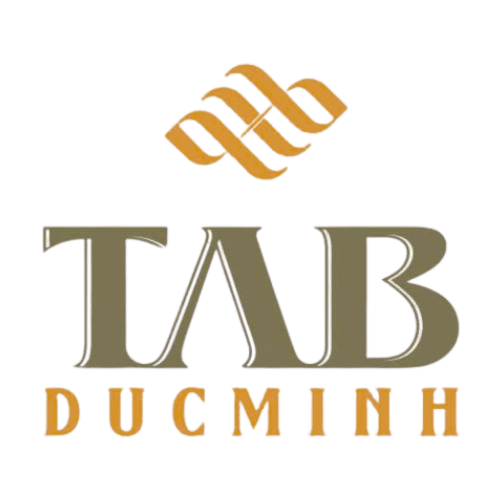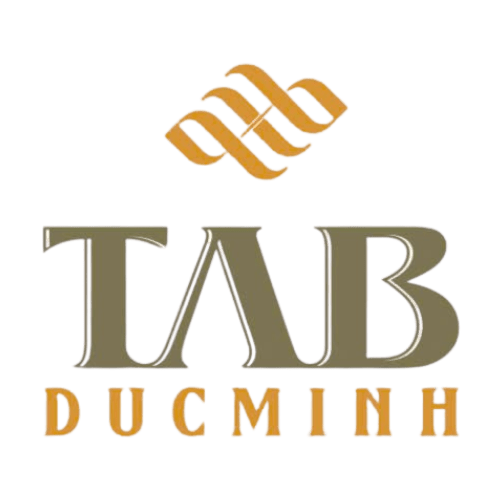Tin tức
The Power of Symbols: From Ancient Greece to Modern Entertainment
1. Introduction: Understanding the Power of Symbols in Human Culture
Symbols are fundamental elements of human communication, representing ideas, beliefs, and values across diverse civilizations. From ancient hieroglyphs to modern logos, symbols serve as visual shorthand that encapsulate complex concepts in simple images. Their universality underscores their role in shaping collective identities and societal beliefs, acting as bridges between individual experiences and shared cultural narratives.
This article explores how symbols have evolved from their origins in ancient mythologies—such as those of Greece—to their pervasive presence in contemporary entertainment, including video games and branding. By examining this journey, we gain insight into the enduring psychological and cultural influence symbols wield across time.
2. Historical Origins of Symbols: From Ancient Greece to Early Civilizations
a. Symbols in ancient Greek mythology and their significance
Ancient Greece provides a rich tapestry of mythological symbols that continue to influence modern thought. For example, Zeus’s thunderbolt was not only a weapon but a symbol of divine authority and power. It represented his control over the sky and his role as king of the gods, embodying strength and legitimacy. Such symbols served as visual shorthand for divine attributes, making them instantly recognizable and universally understood within Greek culture.
b. How early societies used symbols for religion, power, and social order
Beyond Greece, early civilizations like Mesopotamia, Egypt, and China employed symbols extensively. Hieroglyphs, for instance, combined pictorial and abstract symbols to communicate religious beliefs, social hierarchy, and political authority. The use of symbols in artifacts such as the Egyptian ankh or the Mesopotamian lion symbolized eternal life and royal power, respectively. These representations facilitated societal cohesion by visually reinforcing shared values and divine endorsement.
c. Transition from practical to symbolic representations in ancient artifacts
Initially, many artifacts served utilitarian purposes, but over time, their decoration and inscriptions became laden with symbolic meaning. Pottery, sculptures, and jewelry transitioned from mere functional objects to carriers of cultural identity. For instance, Greek vases often depicted mythological scenes that communicated moral lessons or civic ideals, blending art with symbolic storytelling.
3. The Evolution of Mythological Symbols and Their Psychological Impact
a. The symbolic meanings of gods, monsters, and legendary objects
Mythological figures often embody specific traits or societal values. For example, the Minotaur represents chaos and primal instincts, while Athena symbolizes wisdom and strategic warfare. Objects like Poseidon’s trident or Thor’s hammer carry connotations of divine authority and protection. These symbols serve as archetypes that communicate complex ideas succinctly and memorably.
b. Archetypes and their role in collective subconscious (Carl Jung’s theory)
Carl Jung proposed that archetypes—universal symbols embedded in the collective unconscious—shape human perception and behavior. Symbols like the hero, the mother figure, or the shadow appear across cultures, reflecting shared psychological patterns. Mythological symbols are prime examples of archetypes that resonate deeply within individuals, influencing their dreams, narratives, and cultural expressions.
c. Case study: The thunderbolt of Zeus as a symbol of divine authority
The thunderbolt exemplifies a potent mythological symbol that encapsulates power, authority, and divine intervention. Its depiction in ancient Greek art and literature reinforced Zeus’s role as the ruler of gods and men. Psychologically, such symbols evoke feelings of awe and respect, illustrating how mythic imagery can influence collective consciousness over millennia.
4. Modern Interpretations of Ancient Symbols in Entertainment
a. Reimagining mythological symbols in contemporary media
Today’s films, literature, and video games frequently draw upon ancient mythologies, adapting symbols to fit modern narratives. For instance, movies like Marvel’s Thor rework Norse symbols and deities into superhero mythos, blending ancient themes with contemporary storytelling. Similarly, video games incorporate mythological motifs to deepen character development and world-building, making ancient symbols accessible and engaging for new audiences.
b. The role of symbols in creating immersive narratives and character archetypes
Symbols serve as anchors for storytelling, enabling creators to evoke familiar archetypes that resonate emotionally. For example, a hero wielding a legendary weapon instantly communicates bravery and destiny. This symbolic language fosters immersion, helping audiences connect with characters and plots on a subconscious level.
c. Example: How Le Zeus incorporates mythological symbolism into gameplay and storytelling
Modern gaming platforms like become an expert in understanding how mythological symbols are integrated into game mechanics. For instance, the use of Zeus-like imagery, divine powers, and myth-inspired narratives enhances player engagement by tapping into deep-rooted cultural symbols of authority and power. Such integration exemplifies how ancient mythic themes continue to influence entertainment, making experiences more memorable and meaningful.
5. Symbols in Gaming: From Ancient Myths to Modern Mechanics
a. The use of mythological themes and symbols in slot games and video games
Game designers frequently incorporate mythological symbols to evoke familiarity and excitement. Symbols such as gods’ icons, legendary weapons, or mythical creatures are common in slot machines and video games. These elements serve not only as aesthetic features but also as functional components within game mechanics, influencing gameplay and outcomes.
b. How symbols influence player engagement and immersion
Research indicates that symbols with cultural or mythological significance increase player immersion by triggering subconscious associations. For example, features named “Gods Just Wanna Have Fun” or “Mystery Meter” in slot games leverage mythic imagery to heighten anticipation and excitement, encouraging repeated play and emotional investment.
c. Deep dive: The significance of bonus features like “Gods Just Wanna Have Fun” and the Mystery Meter in modern slots
| Feature | Symbolic Significance | Impact on Gameplay |
|---|---|---|
| “Gods Just Wanna Have Fun” | Represents divine playfulness and chaos, linking to mythic gods’ personalities | Triggers bonus rounds that enhance excitement and reward opportunities |
| “Mystery Meter” | Symbolizes fate and the unpredictability of luck, akin to mythological omens | Builds suspense and anticipation, increasing player engagement |
6. The Cultural Significance of Symbols Across Different Mythologies
a. Comparing Greek symbols with Norse symbols, such as Loki’s mischievous nature
Greek and Norse mythologies showcase contrasting yet interconnected symbolisms. While Zeus’s thunderbolt signifies divine authority and order, Norse Loki embodies chaos, trickery, and change. Loki’s symbol, often depicted as a mischievous figure or a serpent, represents the disruptive force that challenges established order—an archetype that resonates across cultures.
b. Cross-cultural symbolism: Universality and diversity
Despite cultural differences, many symbols share core meanings, such as the serpent representing rebirth, danger, or wisdom across civilizations—from the ouroboros in Egypt to the caduceus in Greece. Modern entertainment leverages this universality to craft stories and visuals that appeal broadly, while also respecting unique cultural nuances.
c. How modern entertainment leverages these symbols to appeal to global audiences
By integrating symbols familiar from various mythologies, creators can foster instant recognition and emotional resonance. For example, a game featuring Norse gods or Greek heroes can attract diverse audiences by tapping into shared mythic archetypes, making content more engaging and culturally inclusive.
7. Non-Obvious Aspects of Symbols: Hidden Meanings and Psychological Depth
a. The subconscious influence of symbols on behavior and decision-making
Symbols subtly shape our perceptions and choices. For instance, the color gold in gaming often signifies wealth or success, influencing players’ expectations and reactions. Similarly, mythological symbols activate deep-seated psychological responses, reinforcing beliefs about power, luck, or fate.
b. Hidden features in games as modern symbols of chance and fate
Many games incorporate hidden or subtle symbols—such as full grid potential or specific spin patterns—that serve as modern representations of chance, luck, or destiny. These embedded cues can influence player behavior by reinforcing the idea that outcomes are governed by unseen forces, echoing mythic notions of fate and divine will.
c. The role of symbols in creating memorable experiences and brand identity
Effective use of symbols fosters strong brand recognition and emotional attachment. Recognizable motifs, whether mythological or abstract, help create memorable interactions, ensuring that brands or entertainment products resonate long after first exposure.
8. The Power of Symbols in Shaping Modern Identity and Culture
a. Symbols as tools for branding and marketing
Modern companies leverage symbols extensively for branding. For example, the emblematic imagery of Le Zeus or other myth-inspired logos conveys authority and excellence, anchoring brand identity in timeless archetypes. Recognizable symbols foster trust and loyalty among consumers.
b. The enduring legacy of ancient symbols in contemporary society
Ancient symbols persist because they tap into universal themes—power, wisdom, rebirth—that continue to resonate. Their integration into modern media and products demonstrates how cultural memory sustains these symbols’ relevance.
c. Future trends: The evolving role of symbols in digital entertainment and virtual worlds
As digital environments expand, symbols will evolve into dynamic, interactive elements within virtual realities and augmented experiences. Their capacity to convey identity, authority, and narrative will remain vital in shaping future digital cultures.
9. Conclusion: The Continuing Journey of Symbols from Ancient Roots to Future Frontiers
Throughout history, symbols have served as bridges connecting ancient mythologies to contemporary entertainment and branding. Their capacity to evoke deep psychological and cultural responses ensures their enduring relevance. Recognizing the profound significance of symbols enhances our appreciation of everyday media, products, and experiences, revealing a layered tapestry of meaning rooted in our collective human story.
By understanding this continuum, we not only appreciate the depth behind symbols but also gain tools to interpret the narratives that shape our modern identities. Whether in ancient temples or virtual worlds, symbols continue to influence how we see ourselves and our place in the universe.

